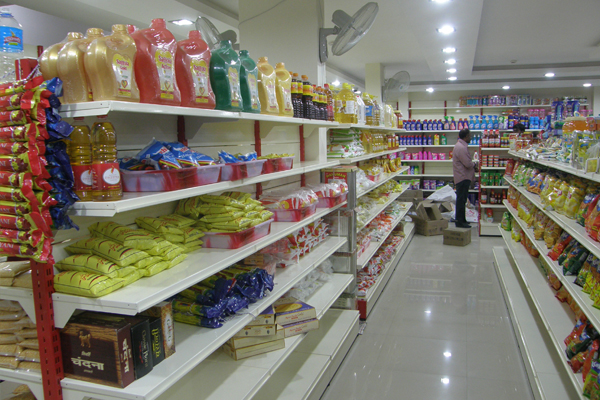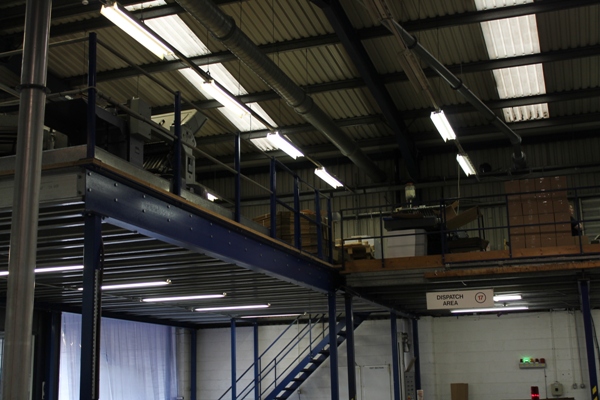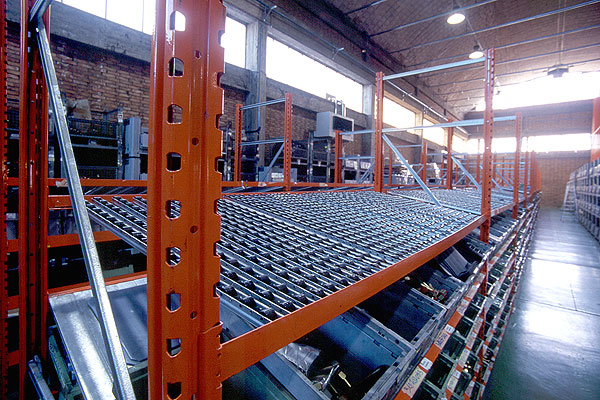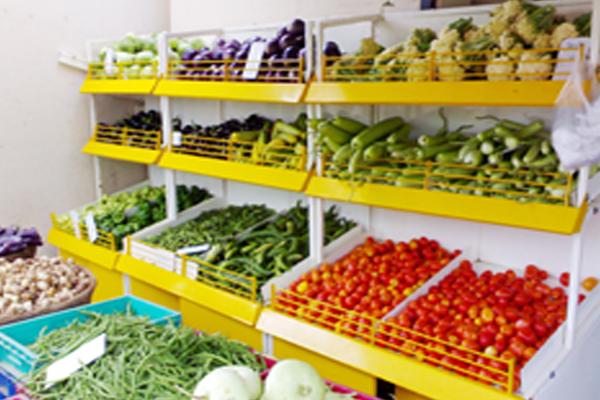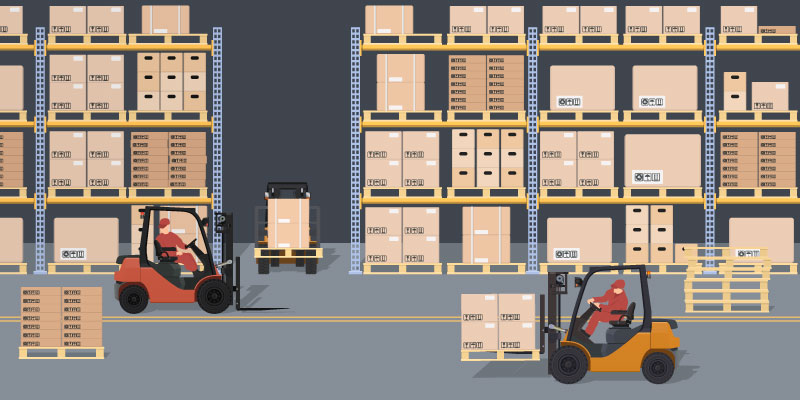Planning to restructure your existing storage space or designing a storage layout for your new facility?
When it comes to vertical storage solutions, pallet racking fares far better than other options. It best aligns with the approach of using space from the ground up, which is, perhaps, the most sensible strategy to ensure a clutter-free, well-organised, and streamlined handling of goods.
However, a sound pallet racking system requires good planning and designing. This blog explains how to design a pallet racking system that will last for years to come. Let’s read on.
Understanding the Types of Pallet Rack Designs
Knowing your pallet racks is just as important as knowing your pallet rack environment. Before you speak with your rack manufacturer about pallet rack system design, you should understand the types of racks available today. Currently, numerous choices are available, and most rack manufacturers also offer customisation per your requirements.
Here’s a list of options to choose from:
1. Drive-in pallet racks
Have a large warehouse with a lot of space and a large inventory? Go for drive-in pallets that allow for 10 to 12 pallet depth and 6 to 7 pallet height. Although this system is not suitable for order picking, it is an excellent choice for warehouses that thrive on multiple storage options.
2. Mobile racks
Mobile racks are the only pallet racks with wheels designed to electronically stop and lock during the loading and unloading process. The latest mobile pallet racks are uniquely designed to be earthquake-proof, hence making them completely reliable.
3. Push back pallets
As pallets are stacked vertically, sometimes up to four deep, this racking system differs from selective racking in the sense that it does not offer the same accessibility. Push-back pallets are an excellent option for those who subscribe to first in, last out (FILO) and have more pallets per SKU.
4. Narrow aisle racks
Absolutely ideal for small warehouses, the narrow aisle racking system goes one step further in storing a high number of SKUs in small quantities. The narrow aisles also contribute to faster selection because small spaces require more time to identify, select and pick out the product.
5. Selective pallet racks
If your warehousing operation depends on the First In First Out (FIFO) model, selective pallets are the best because they offer a great amount of accessibility. A further benefit of this system is that it is particularly effective in operations where inventory is stacked at lower levels.
How to Design Pallet Racking Systems: The Basics
If you choose pallet racks, you need to understand one thing: They do not come in standard sizes, despite being the most preferred storage option. These racks are designed to suit warehousing operations, available space, capacity, and workforce resources.
Here are two basic facts you need to understand to achieve long-term success with pallet racks:
1. Pallet rack design
To build your pallet racking, you must plan everything before committing to a structure. Your plan should include aspects like:
- Location of the staging area and loading docks.
- Design of interior building structures like foundation columns.
Understanding the staging area and dock location is vital to creating a functional dock-to-stock pathway for loading and unloading purposes. Furthermore, the interior structural design information will help identify places that cannot or should not be used to install racks. Because of differences in city laws regarding how far products should be stored from sprinklers, you should also consider your sprinkler systems.
2. The Bay design
You can duplicate the bay across your warehouse once it’s designed to suit your needs. To understand the bay design, here’s an example using a standard GMA pallet of 48″ length and 40″ width. Here’s a list of the measurement criteria to bear in mind:
- Height
To determine the height of the top pallet, you’ll need to know the exact size of the building. You can determine the number of beam levels by dividing the load height by the maximum clear height.
- Width
A 96″ beam can support 40″ wide pallets that can be stored side by side. However, a 40″ wide pallet requires 92 inches of beam spacing to meet the national fire code.
- Overhang
The uprights are usually 42 inches deep, and the front and back overhangs are 3 inches each.
- Height-to-depth ratio
A 6:1 height-to-depth ratio eliminates the need for cross-aisle ties and aids in stability.
- Pallet size
A shelf beam is measured from the floor up to its top loaded beam, and an upright column is measured from its face to its face.
4 Major Factors to Keep in Mind While Designing Pallet Racks
To complete your rack plan, you must analyse the other four factors essential to your basic design.
1. Frame capacity
A significant requirement for maintaining valid frame capacity is to comply with instructions from the rack manufacturer. Generally, the pallet rack system design process should consider the maximum and average pallet loads. In fact, planning for the heaviest load in your warehouse will give you a bit of wiggle room for other loads. To determine the maximum payload per bay, multiply the number of beam levels by the load weights.
2. Rack Materials
The main component for pallet racks is steel, and you will need the strongest and best quality you can get. Steel is used in two forms:
- Rolled steel can be installed quickly with boltless beam connectors.
- Hot-rolled steel is manufactured at extremely high temperatures.
Structural racking is best for coolers, outdoor storage, and freezers, as it can withstand more abuse.
3. Work Areas
Production work areas should be taken into account when designing pallet racks in warehouses and manufacturing companies. Besides, investing in solid floors is a must if you want your pallets to stand steadily with all the inventory weight. Lastly, you must consider the ceiling and column height in your workspace area to ensure the rack fits perfectly.
4. Handling Equipment
A busy warehouse will probably have half a dozen trucks, forklifts, and other material-handling equipment zipping around the place. A good aisle width is mandatory to ensure maximum safety and efficiency and to reduce the risk of damage to your pallet rack. Besides, ample space between frames makes loading and unloading more efficient.
Final Tips to Install Your Pallet Racking System
Last but not least, it is mandatory to adhere to your city’s laws and guidelines before installing and using your pallet racks. Your pallet rack plans must be compliant with the following:
- Fire codes.
- Workforce safety.
- Operational efficiency.
Make an effort and time to have your plans reviewed by professionals and approved by local government officials to avoid hassles later.
City guidelines differ with respect to the following:
- Egress path compliance.
- Seismic calculations.
- Maximum storage heights.
- Stamps from certified professionals.
Final thoughts
Establishing a budget related to pallet rack style and type will save you from wrongly investing in a system that doesn’t accommodate your future needs and growth.
For expert advice to design your pallet racking system, you can always rely on Donracks, Coimbatore‘s leading name for storage solutions. Feel free to call us or email us.

